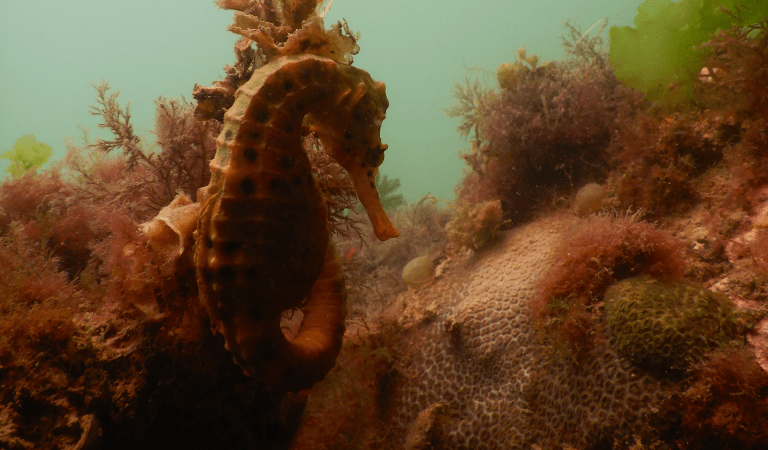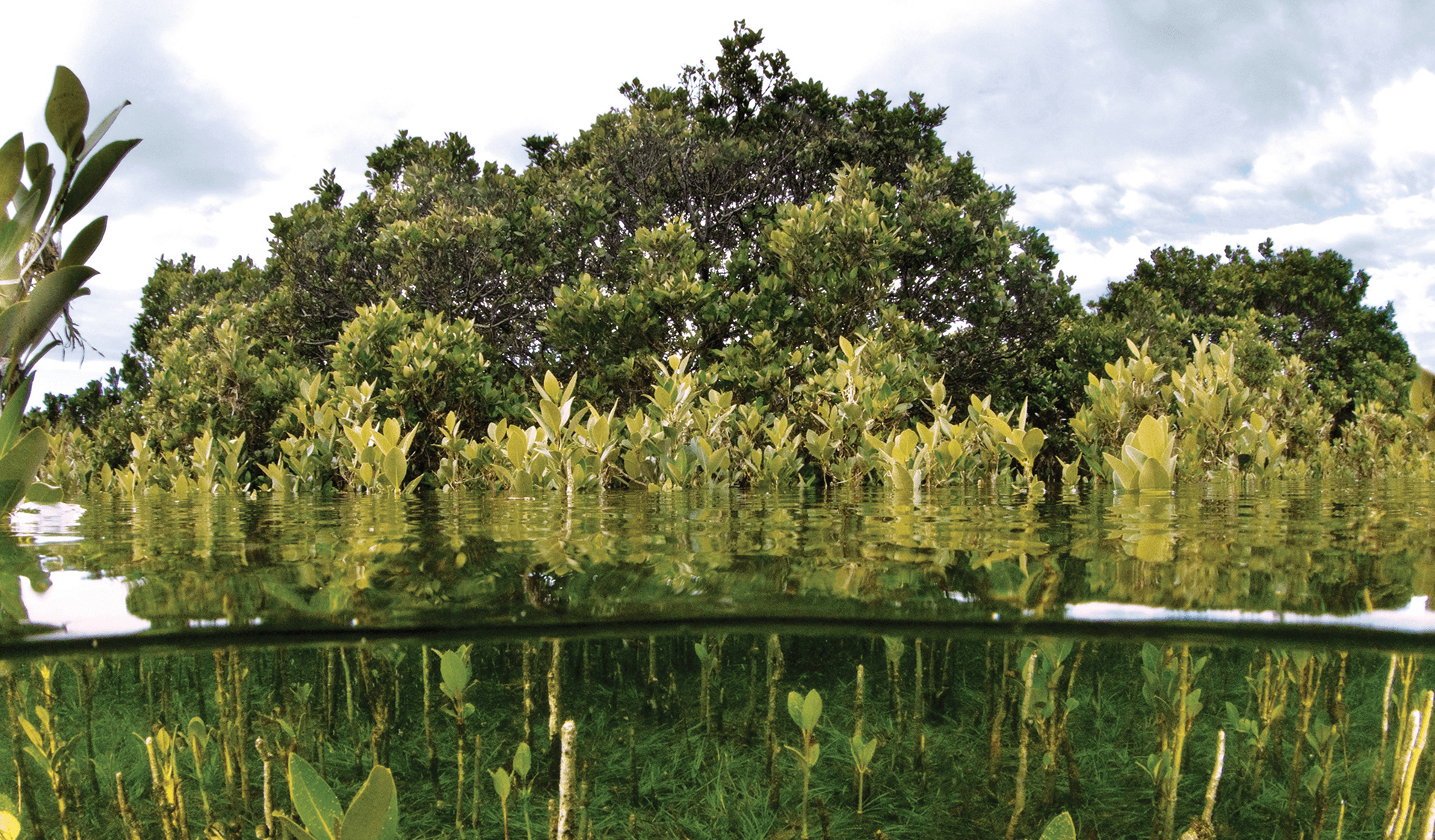Explore
Jawbone Marine Sanctuary
Discover a pocket of tranquility and protected coastal habitats beside Williamstown. The small area of Jawbone Marine Sanctuary is incredibly diverse and contains examples of all marine habitats of northern Port Phillip.
The west of the promontory is comprised of saltmarsh and the largest area of mangroves within Port Phillip – the only Victorian mangroves growing on a basalt coast. Fine clayey sand and patches of seagrass lie offshore.
The eastern side of the sanctuary has rocky environments, from the high up areas only occasionally touched by storm waves to submerged boulders and ledges that lie beneath the lowest tides. Soft basalt rock has weathered into smaller rocks and pools that are a home for tidal creatures. Sandy beaches lie between the clay and rock.
Visitors can encounter a range of marine and bird life in these diverse habitats. Explore the pretty gardens of green or pink coralline algae in the rockpools and try to spot urchins and crabs within the crevices or large turban shells, limpets and snails. Snorkelers and swimmers can keep an eye out for glass shrimp and small fish darting amongst the seaweed in shallow waters and admire the brightly coloured sponges, nudibranchs and many fish around the submerged boulders.
From below the water, divers can see some of the heritage registered shipwrecks that are evidence of the strong maritime history of Williamstown. Birdwatch along the boardwalk or use the hides to catch a glimpse of migratory seabirds and shorebirds among the mangroves, mudflats and saltmarshes.
Things To Do

Wandering on the boardwalk

Rockpooling

Snorkelling and diving

Sea kayaking and canoeing
Jawbone Marine Sanctuary
This area is well known for its wildlife. Keep an eye out for:
Tours and adventure experiences in parks
One of the best ways you can get into nature is with a Licensed Tour Operator.
There are more than 400 Licensed Tour Operators across Victoria who are ready and waiting to help you experience and connect with Victoria’s spectacular parks and waterways.
Discover more than 60 different types of nature-based experiences including hiking, mountain biking, boating, four-wheel driving, indigenous culture tours, birdwatching, surfing, diving and so much more.
Licensed Tour Operators know all the best places to go and will plan and prepare your visit to ensure you are safe and can enjoy your nature-based adventure to the fullest.
How to get there
Jawbone Marine Sanctuary
When you're there
Need to know
Jawbone Marine Sanctuary
Accessibility
The gravel paths and wooden timber boardwalk are accessible for most prams and wheelchairs.
Safety
Check the weather conditions prior to your visit, and avoid the sanctuary during storm and weather events. As with all in-water activities, take caution and ensure you remain safe around the water. Always dive or snorkel with a buddy and stay within your skill limits. Never undertake any activity that is beyond your health, fitness, experience and training levels.
When visiting the sanctuary, look out for resident snakes and the cryptic blue ringed octopus, both of which can give a life-threatening bite if startled by human visitors – never walk through long grass or shrubs, or stick your finger into a hidden rock pool crevice.
Take your time traversing the slippery and uneven rocks of the sanctuary.
How we keep it special
The Management Plan for Jawbone Marine Sanctuary directs all aspects of management in the parks until the plan is reviewed.
Marine national parks and sanctuaries exist to protect Victoria’s unique and diverse marine ecosystem, and the many plants and animals that live in them. People are encouraged to visit and be mindful to not have a negative impact on the area when enjoying these special places.
To protect and preserve marine biodiversity, any extractive or damaging activities (e.g. any type of fishing, collecting or taking of anything) is prohibited. This will help to maintain or enhance the condition of these areas.
All methods of fishing from the shore or at sea are prohibited, including fishing, netting, spearing, taking or killing of marine life. The taking or damaging of animals, plants and objects (artefacts) is also prohibited.
There are strong penalties under the National Parks Act for fishing in Marine National Parks and Marine Sanctuaries. To report a fishing offence call Fisheries Victoria on 13 FISH (13 3474).
Parks Victoria Rangers and the local Jawbone Marine Sanctuary Care Group work hard to protect this special area. We conduct regular mangrove and seagrass monitoring, regularly conduct beach clean up events, and monitor local marine pest invasions. If you would like to get involved you can visit the Jawbone Marine Sanctuary Care Group page at www.jawbone.org.au or www.parkconnect.vic.gov.au.




